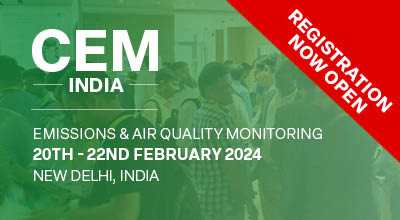| Abstract Title: | CEMS, installation, calibration, functional test and ongoing quality control |
| Session Choice: | Continuous Emission Monitoring |
| Presenter Name: | Mr Bernhard Thull |
| Company/Organisation: | TÜV SÜD Industrie Service GmbH, Business Area Environmental Engineering |
| Country: | Germany |
Abstract Information :
Comprehensive legislation, with clear requirements and limits, forms the basis for a success-ful monitoring of the emissions from plants under government control. This includes a permit, which shall give clear guidance to the plant operator. Besides the operating requirements, the pollutants and the levels for emissions to air, water and soil should be defined, as well as fur-ther means to protect inhabitants from noise, odors, etc. The permit conditions including emission limit values shall be based on the local legislation. For example, in Europe the IED, industry emissions directive is the main EU instrument regulating pollutant emissions from industrial facilities. The IED aims to achieve a high level of protection of human health and the environment by reducing harmful industrial emissions across the EU.
However, the implementation of the legal requirements demands an over-reaching concreti-zation and specific instructions for implementation. In Germany this is covered by regional guidelines published by VDI and DIN, at European level EN directives and on international level ISO guidelines. These guidelines provide us with the necessary support for the imple-mentation of statutory requirements. Without a consistent implementation practice, legal re-quirements are doomed to failure.
In my lecture, I would like to explain the implementation of the statutory requirements for con-tinuous emissions monitoring using three of the most important European Directives. These are the:
EN 15259: 2008-01, Air quality - Measurement of stationary source emissions.
EN 15267-1 to 4, Air quality - Certification of applied measuring systems.
EN 14181: 2014, Stationary source emissions - Quality assurance of applied measuring sys-tems.
The Standard EN 15259, is important to plant designers, manufacturers, plant operators, test-ing laboratories, accreditation bodies and regulators. It provides us with requirements for measurement sections and sites with respect to performing emission measurements, the measurement objective, the planning and the reporting of emission measurements of air pol-lutants. The standard specifies procedures for taking representative samples in waste gas ducts.
EN 15267 specifies the general principles, including common procedures and requirements, for the product certification of automated measuring systems (AMS)
EN 14181 describes the quality assurance procedures needed to secure that an automated measuring system (AMS) is capable of meeting the uncertainty requirements on measured values given by legislation:
QAL1, suitability test of measuring instruments based on the EN 15267.
QAL2, a procedure to calibrate the AMS and determine the variability of the measured val-ues, complemented by the scope of the annual surveillance tests AST.
QAL3, ongoing quality control under the responsibility of the plant owner.
If these three directives are consistently applied from the outset, the aim is to achieve a high-quality, comparable monitoring of the emissions by using CEMS.
The presentation gives a brief insight into the content and application of the guidelines in prac-tice.
In order to establish continuous monitoring of emissions, a set of guidelines and the consistent application and monitoring of these through the involved parties is indispensable.
The example using the European Directives is intended to provide a first impression of a pos-sible solution. Assimilation to the local legislation are of course necessary and sensible.



